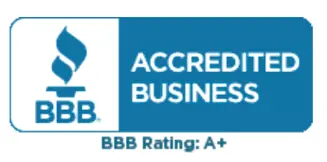-
PIOGLITAZONE; METFORMIN (pye oh GLI ta zone; met FOR min) treats type 2 diabetes. It works by decreasing your blood sugar (glucose). Changes to diet and exercise are often combined with this medication.
This medicine may be used for other purposes; ask your health care provider or pharmacist if you have questions.
-
Take this medication by mouth with water. Take it as directed on the prescription label at the same time every day. Take it with food. Keep taking it unless your care team tells you to stop.
A special MedGuide will be given to you by the pharmacist with each prescription and refill. Be sure to read this information carefully each time.
Talk to your care team about the use of this medication in children. Special care may be needed.
Overdosage: If you think you have taken too much of this medicine contact a poison control center or emergency room at once.
NOTE: This medicine is only for you. Do not share this medicine with others.
-
Do not take this medication with any of the following medications:
-Certain contrast medications given before X-rays, CT scans, MRI, or other procedures
-Dofetilide
This medication may also interact with the following medications:
-Acetazolamide
-Alcohol
-Atorvastatin
-Certain antivirals for HIV or hepatitis
-Certain medications for blood pressure, heart disease, irregular heart beat
-Cimetidine
-Dichlorphenamide
-Digoxin
-Diuretics
-Estrogens or progestin hormones
-Gemfibrozil
-Glycopyrrolate
-Insulin
-Isoniazid
-Ketoconazole
-Lamotrigine
-Memantine
-Methazolamide
-Metoclopramide
-Midazolam
-Midodrine
-Niacin
-Phenothiazines like chlorpromazine, mesoridazine, prochlorperazine, thioridazine
-Phenytoin
-Ranolazine
-Rifampin
-Steroid medications like prednisone or cortisone
-Stimulant medications for attention disorders, weight loss, or to stay awake
-Thyroid medications
-Topiramate
-Trospium
-Vandetanib
-Zonisamide
This list may not describe all possible interactions. Give your health care provider a list of all the medicines, herbs, non-prescription drugs, or dietary supplements you use. Also tell them if you smoke, drink alcohol, or use illegal drugs. Some items may interact with your medicine.
-
Visit your care team for regular checks on your progress.
A test called the HbA1C (A1C) will be monitored. This is a simple blood test. It measures your blood sugar control over the last 2 to 3 months. You will receive this test every 3 to 6 months.
Learn how to check your blood sugar. Learn the symptoms of low and high blood sugar and how to manage them.
Always carry a quick-source of sugar with you in case you have symptoms of low blood sugar. Examples include hard sugar candy or glucose tablets. Make sure others know that you can choke if you eat or drink when you develop serious symptoms of low blood sugar, such as seizures or unconsciousness. They must get medical help at once.
Tell your care team if you have high blood sugar. You might need to change the dose of your medication. If you are sick or exercising more than usual, you might need to change the dose of your medication.
Do not skip meals. Ask your care team if you should avoid alcohol. Many nonprescription cough and cold products contain sugar or alcohol. These can affect blood sugar.
If you need surgery or if you will need a procedure with contrast medications, tell your care team that you are taking this medication.
Wear a medical ID bracelet or chain, and carry a card that describes your disease and details of your medication and dosage times.
This medication may cause a decrease in folic acid and vitamin B12. You should make sure that you get enough vitamins while you are taking this medication. Discuss the foods you eat and the vitamins you take with your care team.
-
If you miss a dose, take it as soon as you can. If it is almost time for your next dose, take only that dose. Do not take double or extra doses.
-
Side effects that you should report to your care team as soon as possible:
-Allergic reactions—skin rash, itching, hives, swelling of the face, lips, tongue, or throat
-Change in vision such as blurry vision, seeing halos around lights, vision loss
-Heart failure—shortness of breath, swelling of the ankles, feet, or hands, sudden weight gain, unusual weakness or fatigue
-High lactic acid level—muscle pain or cramps, stomach pain, trouble breathing, general discomfort and fatigue
-Liver injury—right upper belly pain, loss of appetite, nausea, light-colored stool, dark yellow or brown urine, yellowing skin or eyes, unusual weakness or fatigue
-Low vitamin B12 level—pain, tingling, or numbness in the hands or feet, muscle weakness, dizziness, confusion, trouble concentrating
-Red or dark brown urine, pain or trouble when passing urine, passing frequent amounts of urine
Side effects that usually do not require medical attention (report to your care team if they continue or are bothersome):
-Diarrhea
-Headache
-Nausea
-Runny or stuffy nose
This list may not describe all possible side effects. Call your doctor for medical advice about side effects. You may report side effects to FDA at 1-800-FDA-1088.
-
Keep out of the reach of children and pets.
Store at room temperature between 15 and 30 degrees C (59 and 86 degrees F). Protect from moisture and light. Throw away any unused medication after the expiration date.
NOTE: This sheet is a summary. It may not cover all possible information. If you have questions about this medicine, talk to your doctor, pharmacist, or health care provider.
DISCLAIMER: This drug information content is provided for informational purposes only and is not intended to be a substitute for professional medical advice, diagnosis, or treatment. Patients should always consult their physician with any questions regarding a medical condition and to obtain medical advice and treatment. Drug information is sourced from GSDD (Gold Standard Drug Database ) provided by Elsevier.

